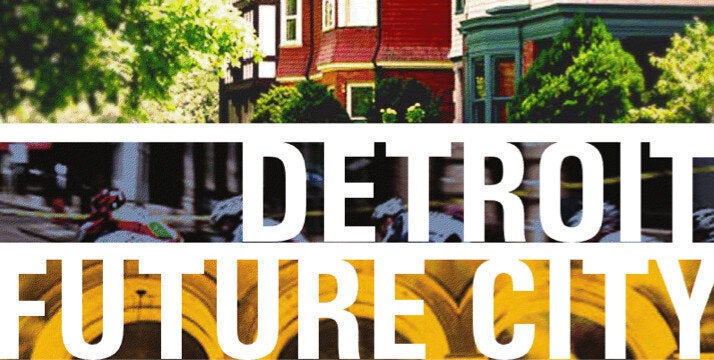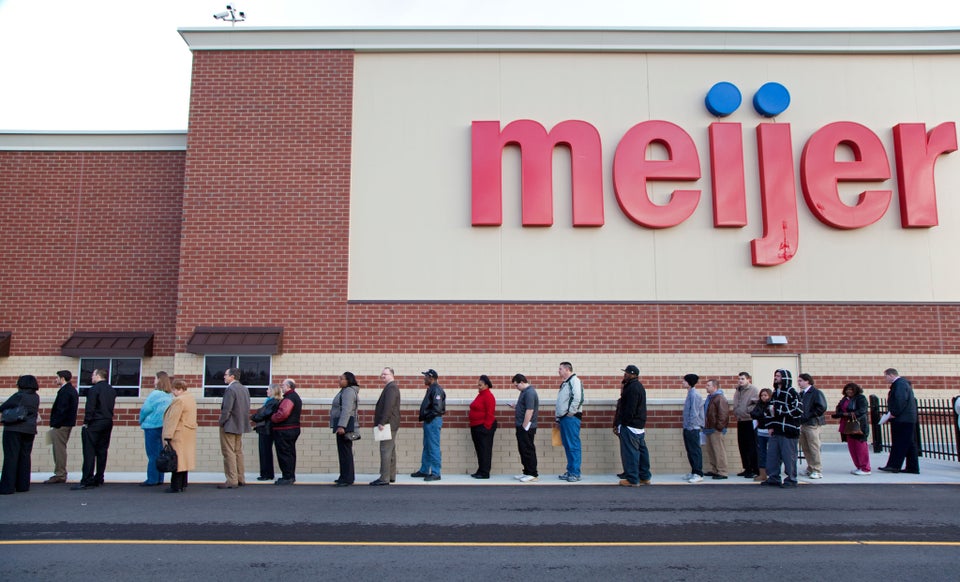
What will Detroit look like tomorrow? In 10 years? Or even 50?
After more than two years of mapping, scheming, surveying and re-imagining, not to mention 30,000 conversations with residents, the Detroit Works Project Long Term Planning will unveil a city-wide framework for change and development on Wednesday morning.
This book-long body of work, and the very different city that its recommendations could shape, even comes with its own new name: Detroit Future City.
Imagine a Detroit where empty warehouses become "Live-Make" districts; hackerspace neighborhoods zoned for artisans and creatives to live in the same spaces where they create. Or a neighborhood where vacant land has been cultivated into a protected woodlands area favored by hikers. Think of a Motor City where homeowners took light rail trains or high-speed buses to work every day.
Organizers, led by NYC-based project manager Toni Griffin, are careful not to call Detroit Future City a "master plan" -- Detroit already has one of those -- but a collective resource for businesses, philanthropists, community groups and city agencies alike to consult about services and resources. It plots a rough course to re-envision and transform Detroit over the next 50 years. Local voices involved included Professor Dan Pitera of University of Detroit-Mercy, Melissa Dittmer of RogueHAA and Dan Kinkead, an architect with Hamilton Anderson Associates.
It also walks a careful path around one controversial idea proposed by Mayor Dave Bing and others in 2010. At the time, the city's mayor called for downsizing Detroit into seven to nine different population centers. As much as 45 square miles of the city, or one third of Detroit's total land, would be basically shut down, with city services cut off for any residents who remained. Planners have seemingly chosen efficiency over prodding an eminent domain fight not seen in Detroit since Poletown. The team's strategists presented ideas to continue offering city services to smaller groups of residents. They also made clear that growing newly-defined neighborhoods and residential zones were long-term, organic efforts.
"It's about creating a place for all Detroiters," said Patera at a briefing for media held on Tuesday. "It understands the assets we have, and understands the past, to create an innovative future."
While Future City does sketch out parts of the city that could eventually be rezoned as "innovation ecological" areas or carbon forests, with an emphasis on creating regionally competitive neighborhoods, there seems to be no motivation to create nine identical Midtowns throughout Detroit. The plan calls for strengthening traditional residential tracts in some sections of the city, particularly Detroit's Northwest Side. Future City also imagines "green neighborhoods" of multi-family apartment properties with more parks and open space, and calls for local arts to be integrated into Detroit's comprehensive master plan. New ponds, dubbed "blue infrastructure," could collect rainwater and runoff, giving the city's overtaxed sewage system a break.
The Future City plan is more than just a thesis on land use. The economic growth section of the framework suggests strategies that leaders hope will create equitable business development in the city and support minority business owners. Creating opportunities for work inside the city limits for residents, as well as reliable transit options for those without cars, was one major tenet. Economic sector leaders say that local business-to-business sales and services could create as many as 10,0000 new jobs, while continuing efforts to attract education, medical, tech and manufacturing jobs within the city limits. About half the city's employment is currently located on 15 percent of the city's land, Griffin said. Bolstering these "natural economic corridors" would help create urban density, make it easier to target transportation spending to high-traffic areas and raise the overall value of land in the city. Neighborhoods like Corktown, McNichols, Southwest Detroit and Midtown were among those districts cited for their economic potential.
"There are places that are probably more ripe for investment and development and we need to focus in on those and get business and business activity growing there," Griffin said at a press briefing on Tuesday.
All told, the plan is highly detailed, organized around the six sectors of economic growth, land use, city systems, neighborhood revitalization, physical assets and civic engagement. Planners say the ideas could be accommodated even if the city loses another seventh of its population, though population stabilization is their first major goal. Milestones for progress are charted for the next five years, at 2020, 2030 and an ultimately transformed Detroit that's visualized in the year 2050.
That Detroit isn't right-sized, just readjusted. Within those city limits lies room enough for organic farms and high-tech firms alike, brand-new developments and historic single-family homes and the infrastructure to support a 21st century city. As the city navigates through persistent budget shortfalls and an uncertain financial future, that future Detroit seemed a long ways away.
But organizers said they are confident that change will begin as early as Wednesday's press conference, where the project's complete framework will be unveiled to the public. They're hoping that major stakeholders like public officials, nonprofit leaders, corporations and universities will all adapt the framework as they plot their future plans for growth and investment.
And, if nothing else, they were absolutely certain that, as civic discourse continues to allow Detroiters a say in ensuring the future of their city, this framework will bend and adapt to reflect those voices.
"We hope there are better solutions out there," Griffin said.
